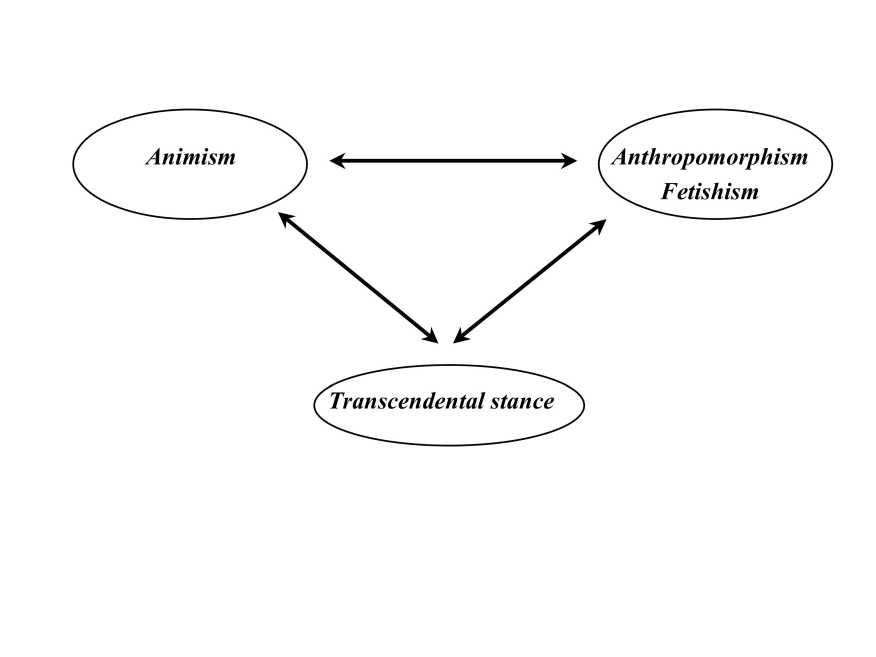and how, religious concepts emerge in the context of human cognitive evolution.
Drawing on the theoretical lines of the Material Engagement approach (Malafouris 2004;
Renfrew 2004) I want to advance a different hypothesis that places material culture at the
heart of the human capacity for religious thinking (cf. Day 2004).
The human ‘religious sense’: basic ingredients of ‘religious intelligence’
I want to start by clarifying how I conceptualise religious thinking or intelligence.
Drawing on a number of recent studies at the interface between religious studies and
cognitive sciences (Boyer 1993; 1996; 1998; 2001; McCauley and Lawson 2002;
Whitehouse 2000; 2004; Guthrie 1993) I propose that there are three principal elements
that characterize and constitute this type of thinking (Figure 26.1): (a) Animism: the
attribution of life or spirit to inanimate things and events, (b) Anthropomorphism: the
attribution of human characteristics to nonhuman things or events, and finally (c) The
transcendental stance: beliefs about the supernatural (spirits, deities, soul, life after death,
eschatology, imperceptibles, and Autoscopic phenomena (AP).

Figure 26.1. The basic cognitive nexus of Religious Intelligence.
For my purposes in this paper I suggest that the above three features taken together
constitute what I call the basic human ‘religious sense’, and the aim of the hypothesis
advanced in this paper is to point a possible direction of research for answering how did
this basic religious sense evolve and originate? Answering that, I suggest, we need to
consider each of the three features independently in order to explore their cognitive and
More intriguing information
1. THE RISE OF RURAL-TO-RURAL LABOR MARKETS IN CHINA2. The name is absent
3. The name is absent
4. Intertemporal Risk Management Decisions of Farmers under Preference, Market, and Policy Dynamics
5. The Prohibition of the Proposed Springer-ProSiebenSat.1-Merger: How much Economics in German Merger Control?
6. CROSS-COMMODITY PERSPECTIVE ON CONTRACTING: EVIDENCE FROM MISSISSIPPI
7. Temporary Work in Turbulent Times: The Swedish Experience
8. Expectations, money, and the forecasting of inflation
9. Langfristige Wachstumsaussichten der ukrainischen Wirtschaft : Potenziale und Barrieren
10. The Institutional Determinants of Bilateral Trade Patterns